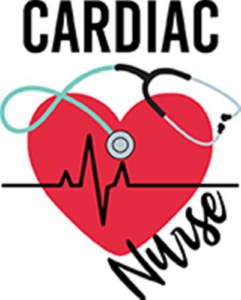Conditions of the cardiovascular system shadow health Differential Selection
 In this activity, you were asked to identify which cardiovascular differential diagnoses were essential to investigate to ensure patient safety.
In this activity, you were asked to identify which cardiovascular differential diagnoses were essential to investigate to ensure patient safety.
You were automatically evaluated by the simulation on whether or not you identified the appropriate list of Do-Not-Miss diagnoses.
Review the list of most appropriate Do-Not-Miss diagnoses below. Correct selections have been marked with a ✅, while selections you missed have been marked with a ❌.
The Most Popular Questions About Nursing Scholarships
| Do Not Miss | Student Rationale | Model Rationale |
|---|---|---|
| Acute Myocardial Infarction | You scored: 1 out of 1 Great job! You correctly identified this diagnosis as do not miss. | The patient states to be experiencing chest pains with activity which relieves with rest. Chest pain with exertion can be a sign of acute myocardial infarction symptoms, a condition which represents an urgent danger to the patient. The possibility of acute MI must be investigated to ensure the patient’s safety. |
| Angina Pectoris, Unstable | You scored: 1 out of 1 Great job! You correctly identified this diagnosis as do not miss. | The patient complains of tight and uncomfortable chest pains. Any time a patient presents with signs of angina, like chest pain and chest tightness, it is important to investigate the possibility of unstable angina assessment, which can be a precursor of arrhythmias, myocardial infarction, and death. |
| Cardiac Arrhythmia | You scored: 1 out of 1 Great job! You correctly identified this diagnosis as do not miss. | The patient experiences chest pains with activity which relieves with rest. Chest pain and an elevated heart rate are symptoms that indicate the possibility of a cardiac arrhythmia diagnosis, a condition which can put the patient in immediate danger. |
| Pulmonary Embolism | You scored: 1 out of 1 Great job! You correctly identified this diagnosis as do not miss. | The patient complains of chest pains especially with activity that relieves with rest. Chest pain which worsens upon exertion indicates the possibility of pulmonary embolism signs. While chest pain from PE is not usually resolved by rest, PE should still be investigated as a possible diagnosis due to the high risk it presents to the patient. |
 Other Differentials
Other Differentials
You were asked to select other potential differential diagnoses that you thought were applicable to the case. Review the list of differential diagnoses below and compare your answers to Diana’s list. Your selections in this section are not automatically scored by the simulation, but your instructor may choose to grade this list.

Struggling to meet your deadline?
Get your assignment on Conditions of the cardiovascular system shadow health Differential Selection done by certified MDs and PhDs in the USA. ORDER NOW!
| Differential | Student Rationale | Model Rationale |
|---|---|---|
| Anemia | Great job! This is an applicable diagnosis, given the patient case details and provider notes. | Based on the provider notes and patient details, this might be an appropriate diagnosis. Chest pain can be a sign of anemia and chest pain. |
| Aortic Dissection | You selected this differential as an applicable diagnosis; however, the patient case details do not fully support this diagnosis. | Based on the provider notes and patient information, this might be a possible diagnosis. This is not the best selection given the scenario conditions of the cardiovascular system shadow health differential selection. |
| Coronary Artery Disease with Stable Angina | Great job! This is an applicable diagnosis, given the patient case details and provider notes. | The patient complains of pains radiating from his midsternal chest area that relieves with rest. Chest tightness and chest pain that present upon exertion and are relieved by rest are indicative of stable angina, for which the most common cause is coronary artery disease. |
| Costochondritis | Great job! This is an applicable diagnosis, given the patient case details and provider notes. | The provider information and patient information support this as a possible diagnosis. Symptoms of costochondritis include chest pain that presents upon certain movements. Since Mr. Foster experiences pain upon exertion, costochondritis should be investigated as a possible cause of his discomfort. |
| Gastroesophageal Reflux Disease (GERD) | Great job! This is an applicable diagnosis, given the patient case details and provider notes. | The patient states to experience chest pains after consuming a large meal. GI disorders are one of the most common causes of chest pain, and GERD symptoms and diagnosis cannot be ruled out without further testing. As the symptoms of GERD can mimic those of a number of cardiac disorders, it is important to consider GERD as a possible origin of the patient’s discomfort. |
| Generalized Anxiety Disorder (GAD) | Great job! This is an applicable diagnosis, given the patient case details and provider notes. | The patient states to experience chest pains in the midsternal area. Panic attacks, associated with GAD, can induce episodes of chest pain and increased heart palpitations that may lead a patient to believe they are experiencing a cardiac event. It is therefore important to consider GAD as a possible origin of the patient’s discomfort. |
| Pneumonia | You selected this differential as an applicable diagnosis; however, the patient case details do not fully support this diagnosis. | Based on the provider notes and patient information, this might be an appropriate diagnosis. Chest pain and an elevated heart rate can be symptoms of pneumonia, which cannot be ruled out without further testing. |
Conditions of the Cardiovascular System – Differential Selection
In this task, your goal was to identify the crucial potential diagnoses that should not be missed for ensuring the patient’s safety. The simulation assessed your choices to see if you correctly identified the “Do-Not-Miss” diagnoses. Below, I’ve listed your choices, your rationale, and the model’s rationale.
Do-Not-Miss Diagnoses:
- Acute Myocardial Infarction
- You got this one right! Well done! The patient reported chest pains during physical activity, which ease with rest. When chest pain occurs during exertion, it could be a sign of acute myocardial infarction, a condition that requires immediate attention for patient safety.
- Angina Pectoris, Unstable
- You correctly identified this diagnosis as well. The patient described tight and uncomfortable chest pains. When a patient exhibits symptoms like chest pain and chest tightness, it’s important to consider the possibility of unstable angina pectoris. This condition can be a precursor to serious issues like arrhythmias, myocardial infarction, or even death.
- Cardiac Arrhythmia
- You made the right choice here too. The patient experiences chest pains during activity, which subside with rest. Chest pain combined with an elevated heart rate suggests the potential presence of cardiac arrhythmia, a condition that can immediately endanger the patient.
- Pulmonary Embolism
- You correctly identified this diagnosis. The patient reported chest pains, especially during activity, which alleviate with rest. While chest pain from pulmonary embolism usually doesn’t improve with rest, it’s crucial to investigate it as a possible diagnosis due to the significant risk it poses to the patient.

- You correctly identified this diagnosis. The patient reported chest pains, especially during activity, which alleviate with rest. While chest pain from pulmonary embolism usually doesn’t improve with rest, it’s crucial to investigate it as a possible diagnosis due to the significant risk it poses to the patient.
Other Potential Diagnoses:
- Anemia
- You made a good choice here. Chest pain can be a sign of anemia, considering the provider’s notes and patient information.
- Aortic Dissection
- While you selected this diagnosis, the patient case details don’t fully support it. It might still be a possible diagnosis based on the provider’s notes and patient information, but it’s not the most fitting choice given the scenario.
- Coronary Artery Disease with Stable Angina
- You made a suitable choice here. The patient’s description of chest pain radiating from the midsternal chest area that improves with rest is indicative of stable angina. The most common cause of stable angina is coronary artery disease.
- Costochondritis
- You made a good decision here. The provider’s information and the patient’s details support costochondritis as a possible diagnosis, especially since the patient experiences pain during certain movements.
- Gastroesophageal Reflux Disease (GERD)
- Your choice here is appropriate. The patient reported chest pains after consuming a large meal. Gastrointestinal disorders can cause chest pain, and GERD cannot be ruled out without further testing, as its symptoms can resemble those of cardiac issues.
- Generalized Anxiety Disorder (GAD)
- You made a good choice here. The patient reported chest pains in the midsternal area. Panic attacks associated with GAD can lead to chest pain and increased heart palpitations, often mimicking cardiac events. It’s important to consider GAD as a potential source of the patient’s discomfort.
- Pneumonia
- While you selected pneumonia as an applicable diagnosis, the patient case details may not fully support it. However, chest pain and an elevated heart rate can be symptoms of pneumonia, and further testing may be necessary to rule it out.
Your choices demonstrate a good understanding of potential diagnoses in this patient’s case. Well done!
Your choices demonstrate a good understanding of potential diagnoses in this patient’s case. If you are looking for more help with online nursing papers, nursing assignments, or custom nursing papers, remember to utilize available resources for the best nursing papers and top nursing essays. Engaging with online nursing essays and conducting nursing research can further enhance your knowledge and skills. Well done!

Dont wait until the last minute.
Provide your requirements and let our native nursing writers deliver your assignments ASAP.

